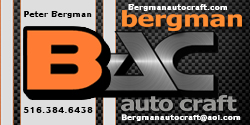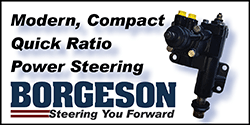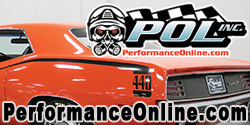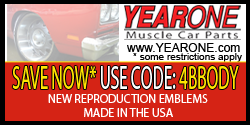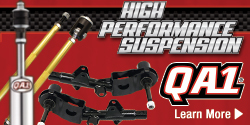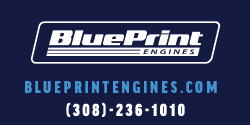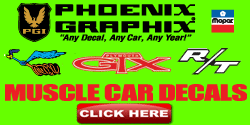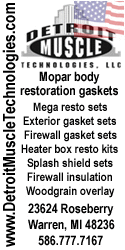Back in the 70's when I was a kid, we used to make fun of the flathead guys that were stuck in the past. Fast forward to 2025, now i'm the stuck in the past guy with my sbc's!
Here's actual rotating weight data collected from my personal 2525lb driver/car. Sbc power, but exact same car/trans/flywheel/clutch/gearing/tires. Exact same heads/intake/carb/cam/compression. Only difference between these two sessions was the engine's rotating assy weight...
...with Scat cast crank (49lbs), 707g steel rods, 1863g bobweight.
......WOT no-load rev rate of 8500rev/sec between 4500-5500rpm
......1st gear WOT 2000 to 4000 rpm rev rate- 1634 rpm/sec
......1st gear 4000 to 6000 rpm rev rate- 1975 rpm/sec
......2nd gear 4000 to 6000 rpm rev rate- 1070 rpm/sec
......3rd gear 4000 to 6000 rpm rev rate- 535 rpm/sec
......no 4th gear data available for comparison
In 3rd gear @ 535rev/sec accel rate, 31.47ftlbs absorbed by the rotating assy, 468.53ftlbs twisting the transmission's input shaft.
In 1st gear @ 1975rev/sec accel rate, 116.18ftllbs absorbed by the rotating assy, 383.82ftlbs twisting the transmission's input shaft.
...with Scat F43 lightweight crank (42.1lbs), 473g aluminum rods, 1492g bobweight, counterweight OD also turned to reduce need to drill crank for balance.
......WOT no-load rev rate of 11,515rev/sec between 4500-5500rpm
......1st gear WOT 2000 to 4000 rpm rev rate- 1910 rpm/sec (276 rpm/sec difference) = 18.8% gain
......1st gear 4000 to 6000 rpm rev rate- 2217 rpm/sec (242 rpm/sec difference) = 12.2% gain
......2nd gear 4000 to 6000 rpm rev rate- 1116 rpm/sec (46 rpm/sec difference) = 4.2% gain
......3rd gear 4000 to 6000 rpm rev rate- 541 rpm/sec (6 rpm/sec difference) = 1.1% gain
......no 4th gear data available for comparison.
In 3rd gear @ 541rev/sec accel rate, 23.49ftlbs absorbed by the rotating assy, 476.51ftlbs twisting the transmission's input shaft.
In 1st gear @ 2217rev/sec accel rate, 96.27ftllbs absorbed by the rotating assy, 403.73ftlbs twisting the transmission's input shaft.
Comparing the two with some rough torque calculations applied...
...both engines put out the same torque when operating steady state @ 5000rpm.
...at WOT 4500-5500 3rd gear acceleration rate, the lightweight rotating assy hits the transmission's input shaft with about 7.98ftlbs more torque.
...at WOT 4500-5500 1st gear acceleration rate, the lightweight rotating assy hits the transmission's input shaft with about 19.91ftlbs more torque.
The difference in bobweight was about 3.27lbs, crankshaft weight difference about 6.9lbs. Pretty good return for a 10.17lb weight reduction!
Grant



